- Home
- Isaac Asimov
In the Beginning Page 11
In the Beginning Read online
Page 11
And all of us, when troubled by a changing world, moan for an older and simpler time before all these “newfangled” things had ruined it all.
Thus, Thomas Grey wrote a poem in 1742 about school-boys at play at Eton College—so happy and without the cares and worries that growing knowledge and adulthood would bring them. He says, “Where ignorance is bliss, / “Tis folly to be wise.”
The Bible says, “For in much wisdom is much grief: and he that increaseth knowledge increaseth sorrow” (Ecclesiastes 1:18).
18 And the Lord God said, It is not good that the man should be alone; 92 1 will make him an help meet for him.93
92. In the P-document Creation-tale, human beings were created in two sexes (“male and female created he them”). In the J-document Creation-tale, a man alone is created, and not a woman. Indeed, no animals have yet been formed. The man is the only living thing in the world aside from the plant life in the Garden. At least, nothing else at all has been mentioned in the J-document.
93. The sentence “I will make him an help meet for him” suffers a bit from archaism. The Revised Standard Bible says, “I will make him a helper fit for him,” and we might say in modern paraphrase, “I will make him a friend and partner.”
Eventually, as the word “meet” meaning “suitable” passed out of use, the sentence came to be taken to mean “I will make him an helpmeet for him,” with the single word “helpmeet” meaning “wife.” The expression was corrupted further to “helpmate” (which is not a bad expression for “wife” at that).
19 And out of the ground the Lord God formed every beast of the field, and every fowl of the air; 94 and brought them unto Adam 95 to see what he would call them: 96 and whatsoever Adam called every living creature, that was the name thereof.97
94. It is only now in the J-document Creation-tale that the animal world generally is created, and in this respect also, it is more primitive than the P-document Creation-tale, in which the animal world is created first and man then crowns it. Certainly, the latter is a closer approach to the evolutionary view of the history of life.
Furthermore, God is again pictured (if the words of the verse are taken literally) as forming each animal out of clay (ground, dust), as a potter would.
No mention is made in the J-document Creation-tale of the formation of sea life, by the way. The J-document limits itself not only to Earth exclusively, but to the land areas of Earth.
95. This is the first place in the King James Version in which the man is called “Adam,” as though that were his personal name. In Hebrew, he is referred to as Adam from the beginning, but that means merely “the man.” The Revised Standard Version continues to refer to him as “the man” in this verse and for a number of verses following.
96. In most cultures, names tend to be confused with things. To know a name and to be able to speak it at will is to have power over it and, therefore, over the thing it represents as well. For that reason, we have to be careful how we use names, especially the names of important people who might resent the implication of being in our power.
Thus, in our own culture, while our family name is for general use, we tend to consider the first name to be reserved for friends, relations, and powerful people who do control us in one way or another. The most democratic of us would resent it, just a bit. if we were addressed by first name by an employee, a child, or a casual stranger of no prepossessing appearance. In some cultures, special names are kept secret; only public names that are not “true” are used, so that no one can gain power over a person.
High officials, in the role of their office, cannot be addressed by name, but only by some honorific: “Mr. President,” “Your Honor,” “Your Majesty,” and God in particular must never be named. Even in addressing him as Lord, you must use circumspection. Any reference to God casually, or under inappropriate conditions, or as an expletive, or, worst of all, to swear falsely in his name (“to take his name in vain”)—that is, for no suitable purpose—is itself a blasphemy.
Therefore, when the animals are brought to the man for names, that is a way of placing them in the man’s power and in the power of mankind generally. That is a more primitive version of the passage in the P-document Creation-tale in which God specifically gives human beings power over all other forms of life by nothing more than the force of his word.
97. The passage reinforces the notion that there are “natural” names for objects and that there is some language (presumably Hebrew) that is the “natural” language. This reaches the point where some people have the superstitious feeling that a dead language that lives on in a religious liturgy (Hebrew in the Jewish liturgy; Latin in the Roman Catholic) should be reserved for that and should not be profaned by ordinary use.
20 And Adam gave names to all cattle, and to the fowl of the air, and to every beast of the field; but for Adam there was not found an help meet for him.98
98. If we understand the last clause to mean that among all the animals of the land and air none was found to be a suitable partner for the man, that makes sense, since none are intelligent enough for the purpose.
Here, too, the J-document Creation-tale betrays its primitive nature. The Lord God is portrayed as experimenting-only after trying out the animals does he come to the conclusion that for a being as intelligent as a human being only another human being will do. The God of the P-document Creation-tale is at no time forced to experiment. All-knowing, he is depicted as creating the Universe as it should be.
If we insist on thinking of “help meet” as “wife,” then we have the ludicrous picture of the Lord God bringing all the animals to the man to see if any of them will serve as wife. One might think that this alone would make it impossible to distort “help meet” in such a way, but the habit of not questioning the words of the Bible is a strong one.
21 And the Lord God caused a deep sleep to fall upon Adam, and he slept: 99 and he took one of his ribs, and closed up the flesh instead thereof;
99. This verse had an interesting connection with the history of science. When anesthesia was introduced in the mid-nineteenth century, there were some who felt that its use to reduce pain was a blasphemous attempt to avoid one of the punishments visited upon human beings by God. This verse was cited by physicians as an instance where God himself had used anesthesia when it was appropriate.
(This was not a completely convincing argument, for God’s use of anesthesia took place before the man had been disobedient; the punishment of pain and of other unpleasantnesses came afterward Still, the verse had its influence and made it a little easier for the use of anesthesia to be accepted.)
22 And the rib, which the Lord God had taken from man, made he a woman, and brought her unto the man.100
100. God forms the partner as not quite another man, but as a modified man; that is, a woman.
This amounts to the creation of sex in the J-document Creation-tale. Presumably, although the tale does not say so, all the animals are now provided with mates. After all, had God earlier provided mates for all animals when he formed them, he would not have been momentarily puzzled as to where to find a suitable partner for the man.
The P-document Creation-tale describes the creation of both sexes simultaneously. This is explicitly stated in the case of man and is implied in the case of the other animals, since God directed them all, “Be fruitful and multiply.”
The J-document tells the more colorful tale, however, and most Bible readers ignore the more sophisticated account of the P-document and insist that woman was created after man and, what is more, out of a portion of man.
This is important because it encourages the belief that woman is a subsidiary being, created only as a partner for man in an afterthought, and that she is no more than an appendage of his (a rib) given human form.
If the woman were created after man in the P-document Creation-tale, that would indicate she was superior to man, for in the P-document creation moves up the scale, the best and most important coming last. In the J-doc
ument, however, the best and most important comes first, since plants and animals are created after man. Since woman is created last of all, that, too, seems to place a stamp of special inferiority upon her.
To be sure, ingenious interpretation can make it seem that the J-document account preaches sexual equality, but in the last two thousand years and more, women have continually been considered the inferior sex on Biblical authority. One need only read Milton’s great epic “Paradise Lost” to see male chauvinism of this type, naked and unashamed.
It is the P-document in this case that is closer to the scientific view of the history of life. Sexual reproduction is at least a billion years old, if not more, and the separation of sexes into separate individuals is probably nearly as old. In that separation, neither male nor female takes precedence.
In many species, particularly among the mammals, the male is physically larger and stronger than the female and can dominate in that way. This is not true of all animal species, however, not even of all mammalian species.
Physiologically, there are good reasons for arguing that the female is the more important and the male a mere adjunct. Among human beings, females have forty-six functioning chromosomes in each cell: males have forty-five plus a stub (the Y-chromosome). The male in this sense might be regarded as an incomplete and imperfect female, and it may be for this reason that females can better survive stress and have a life-span some six or seven years longer than males.
Then, too, while males and females contribute equally to the genetic equipment of the young, it is the female who contributes the initial food supply and generally supplies the postnatal care, if there is any. Among the mammals, the female supplies the environment within her own body for the initial stages of the growth of the young.
23 And Adam said, This is now bone of my bones, and flesh of my flesh; 101 she shall be called Woman, because she was taken out of Man.102
101. The formation of the woman out of the rib bears a distant resemblance to what we now think of as “cloning.”
Of course, what God is described as doing in the Bible has a miraculous quality that cannot be legitimately compared to a mere human operation. For one thing, if a human being were cloned, the genetic character of the cells involved would make it certain that there would be no change in sex. The clone of a man would develop into a man, not into a woman. Similarly, the clone of a woman would develop into a woman, not into a man.
102. Here “Man” is a translation of the Hebrew word ish, which refers to the male of the species specifically, whereas adam is a more general term, closer to what we would think of as “human being.” “Woman” is a translation of ishshah, which is a feminine form of ish. To call a woman ishshah is something like calling her a “Maness.”
The word “woman,” by the way, is not in itself a feminine form of “man,” but is a corruption of the compound word “wife-man.”
The fact that the man here gives a name to the woman is a further indication of his dominion over her.
24 Therefore shall a man leave his father and his mother, and shall cleave unto his wife: 103 and they shall be one flesh.
103. This verse can be used to signify that monogamy is the natural and original state of mankind. After all, the reference is to “wife” and not to “wives.”
It is very likely, after all, that a monogamous relationship has always been common among human beings, since there are roughly equal numbers of each sex born. Therefore, if it is common for many men to be polygamous, it must mean that many other men must. Many primate species are polygamous, and even among human beings there have been many cultures throughout history in which those who were wealthy enough or powerful enough collected as many wives as they could afford or could hold on to. Even where monogamy is enjoined by custom and by law, it seems almost impossible to suppress adultery, promiscuity, and prostitution.
Despite all this, monogamy may be desirable, but that doesn’t mean it is natural.
25 And they were both naked, the man and his wife, and were not ashamed.104
104. Human beings are the only animals that deliberately cover their bodies with extraneous material for reasons associated with what we call “modesty.” Other animals might cover themselves with mud in order to be cool or might make use of an unused shell for security, but as far as we know, only human beings are modest.
We can’t be sure at what stage in the evolution of humanity the use of clothing developed. It seems to make sense to suppose that clothing was first worn to protect sensitive regions, such as the genitalia, from too rough a contact with the environment. (When human beings stood upright, the genital regions were even more exposed than they had been.)
Clothing may have become heavier and more enveloping when human beings migrated into cooler climates, where warmth was needed.
Clothes for the sake of modesty (or sometimes immodesty, as when articles of dress are used to accentuate the sexual regions) may have arisen as a by-product of these more utilitarian origins of the custom.
On the other hand, there are primitive cultures today in which nudity is not considered shameful, and even some advanced ones such as the Japanese or in nudist camps and beaches.
It seems reasonable to suppose that early in the history of humanity, modesty had not been invented, and this verse, therefore, is a reasonable one.
And with this verse, the J-document Creation-tale comes to an end.
Chapter 3 105
1 Now the serpent 106 was more subtil 107 than any beast of the field which the Lord God had made, 108 And he said 109 unto woman, Yea, hath God said, Ye shall not eat of every tree of the garden?110
105. Here a new chapter starts, and appropriately so, for the Creation-tales are finished and primeval human history begins.
There is no indication how much time has elapsed after the woman was formed; we don’t know whether Chapter 3 starts a day or a hundred years after the end of Chapter 2. For the purpose of the tale, the time doesn’t matter, but the absence of time references is nevertheless inconvenient—at least to people in later ages who have learned to attach considerable importance to chronology.
106. The serpent enters the story. Apparently the tale that is about to be told is an adaptation of that portion of the Gilgamesh epic that dealt with how the serpent won its supposed immortality and how human beings lost theirs.
107. “Subtil” is an archaic spelling of “subtle.” Later translations of the Bible characterize the serpent as “craftier” or “slyer” than other animals.
108. In actual fact, the snake is not an intelligent animal. It is a reptile, and reptiles are, in general, less intelligent than mammals. A snake seems crafty, however, because it slithers silently through the underbrush and can attack before being seen; or, if it wishes to escape, it can vanish quickly into small openings. If that is not intelligence, it is, at any rate, a useful substitute.
A reference to the intelligence of serpents is found in the New Testament as well, where Jesus admonishes his apostles: “Behold. I send you forth as sheep in the midst of wolves: be ye therefore wise as serpents, and harmless as doves” (Matthew 10:16).
109. The serpent speaks. This, in itself, is an indication of the primitive nature of the tale of the Garden of Eden. It is one of only two instances in the Bible in which an animal speaks, the other being the case of Balaam’s ass (Numbers 22:28-30). On the other hand, it may be that the serpent is more than a serpent.
110. The woman did not actually receive the Lord God’s prohibition, for it was given to the man before the woman came into existence. To be sure, it might be argued that she was part of Adam’s body at the time, but this is the same sort of argument as the one that explains. “In Adam’s fall, we sinned all”—that Adam’s fault spreads out over all his unborn descendants. Such arguments are by no means obviously acceptable, and many people don’t accept them.
God might have repeated the instructions to Eve, but the Bible doesn’t say so. Since the woman knows of the prohibit
ions, the likeliest explanation is that the man told her of it, and such a secondhand prohibition is never as forceful or as persuasive as the original. This could be considered as an extenuating point in favor of the woman, but it is not so considered either by God or by religionists who for thousands of years have held it bitterly against women that they, through the original woman, were the prime agents of the Fall and of the loss of immortality and innocence.
2 And the woman said unto the serpent. We may eat of the fruit of the trees of the garden.
3 But of the fruit of the tree which is in the midst of the garden, God hath said, Ye shall not eat of it, neither shall ye touch It, 111 lest ye die.
111. Here the woman enlarges and distorts the Lord God’s instructions. God forbade only the eating of the fruit and said nothing, one way or the other, about touching it.
Some of the Rabbinic commentators suggest that it was this twisting of God’s words that was the basic sin that led to all the rest. The legend they tell is that the serpent, on hearing the woman’s version of the prohibition, shoved the woman against the tree, and when she suffered no harm as a result, she was ready to believe what the serpent had to say.
On the other hand, it might be argued that if the woman knew of the prohibition only indirectly, from what the man had told her, it might be conceivable that the man had distorted the instructions in the first place, perhaps in order to make it more forceful.
4 And the serpent said unto the woman, Ye shall not surely die: 112
112. The serpent contradicts God. Why?
It seems motiveless, but the mere fact that the serpent does this gives us cause to suspect that it may be the principle of Chaos. In the Babylonian Creation-myth, Tiamat, the personification of Chaos, is described as a dragon, but a dragon is essentially a huge serpent, sometimes shown with wings (indicating perhaps the smoothness with which the serpent can slither here and there) and with fiery breath (indicating the serpent’s poison).

 The Return of the Black Widowers
The Return of the Black Widowers The Stars, Like Dust
The Stars, Like Dust Foundation
Foundation David Starr Space Ranger
David Starr Space Ranger I, Robot
I, Robot Puzzles of the Black Widowers
Puzzles of the Black Widowers Casebook of the Black Widowers
Casebook of the Black Widowers The Ugly Little Boy
The Ugly Little Boy Azazel
Azazel Pebble in the Sky
Pebble in the Sky Foundation and Empire
Foundation and Empire The Complete Robot
The Complete Robot Fantastic Voyage
Fantastic Voyage Foundation and Earth
Foundation and Earth The Naked Sun
The Naked Sun The Currents of Space
The Currents of Space Foundation's Edge
Foundation's Edge The Robots of Dawn
The Robots of Dawn Nightfall
Nightfall The Caves of Steel
The Caves of Steel Prelude to Foundation
Prelude to Foundation Nemesis
Nemesis Robot Dreams
Robot Dreams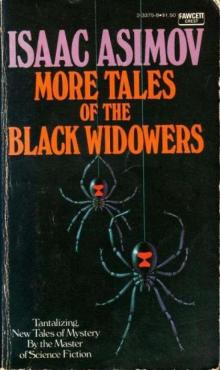 More Tales of the Black Widowers
More Tales of the Black Widowers The Complete Stories
The Complete Stories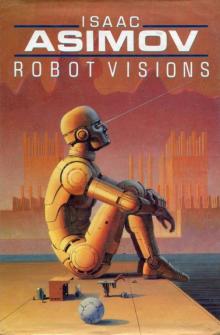 Robot Visions
Robot Visions Lucky Starr And The Moons of Jupiter
Lucky Starr And The Moons of Jupiter Lucky Starr and the Big Sun of Mercury
Lucky Starr and the Big Sun of Mercury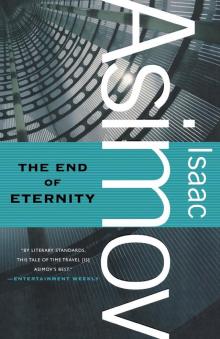 The End of Eternity
The End of Eternity The Bicentennial Man and Other Stories
The Bicentennial Man and Other Stories Lucky Starr And The Rings Of Saturn
Lucky Starr And The Rings Of Saturn Buy Jupiter and Other Stories
Buy Jupiter and Other Stories Forward the Foundation
Forward the Foundation Lucky Starr and the Oceans of Venus
Lucky Starr and the Oceans of Venus The Positronic Man
The Positronic Man The Portable Star
The Portable Star Asimovs Mysteries
Asimovs Mysteries Earth Is Room Enough
Earth Is Room Enough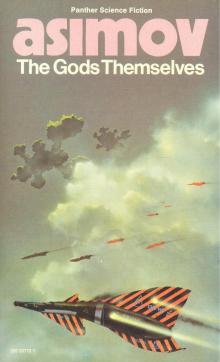 The Gods Themselves
The Gods Themselves Youth
Youth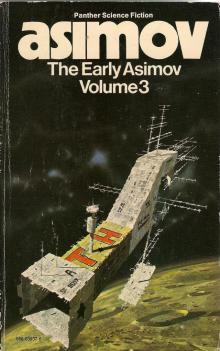 The Early Asimov Volume 3
The Early Asimov Volume 3 The Winds of Change and Other Stories
The Winds of Change and Other Stories Of Time, Space, and Other Things
Of Time, Space, and Other Things Nine Tomorrows
Nine Tomorrows Time Warps
Time Warps Robots and Empire
Robots and Empire Young Star Travelers
Young Star Travelers Fantastic Voyage II: Destination Brain
Fantastic Voyage II: Destination Brain Second Foundation
Second Foundation The Rest of the Robots
The Rest of the Robots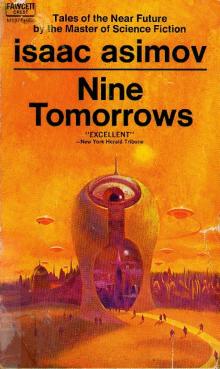 NINE TOMORROWS Tales of the Near Future
NINE TOMORROWS Tales of the Near Future Daneel Olivaw 1 - The Caves of Steel
Daneel Olivaw 1 - The Caves of Steel THE BICENTENNIAL MAN
THE BICENTENNIAL MAN David Starr Space Ranger (lucky starr)
David Starr Space Ranger (lucky starr)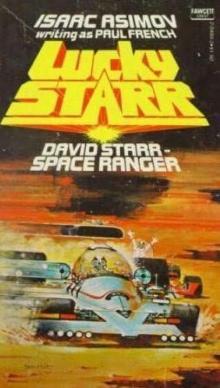 David Starr Space Ranger (ls)
David Starr Space Ranger (ls) Lucky Starr And The Big Sun Of Mercury ls-4
Lucky Starr And The Big Sun Of Mercury ls-4 Pebble In The Sky te-1
Pebble In The Sky te-1 Asimov’s Future History Volume 9
Asimov’s Future History Volume 9 Gold: The Final Science Fiction Collection
Gold: The Final Science Fiction Collection Foundation and Earth f-7
Foundation and Earth f-7 Asimov's New Guide to Science
Asimov's New Guide to Science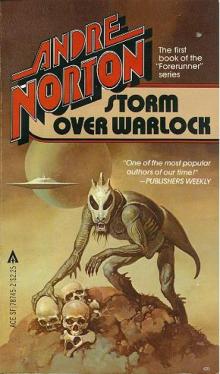 STORM OVER WARLOCK
STORM OVER WARLOCK Stars, Like Dust
Stars, Like Dust Norby The Mixed-Up Robot
Norby The Mixed-Up Robot Found!
Found! Asimov’s Future History Volume 11
Asimov’s Future History Volume 11 Second Foundation f-5
Second Foundation f-5 Asimov’s Future History Volume 15
Asimov’s Future History Volume 15 The Early Asimov. Volume 1
The Early Asimov. Volume 1 Secound Foundation
Secound Foundation Daneel Olivaw 3 - The Robots of Dawn
Daneel Olivaw 3 - The Robots of Dawn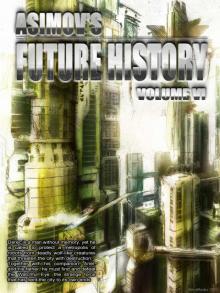 Asimov’s Future History Volume 6
Asimov’s Future History Volume 6 The Early Asimov. Volume 2
The Early Asimov. Volume 2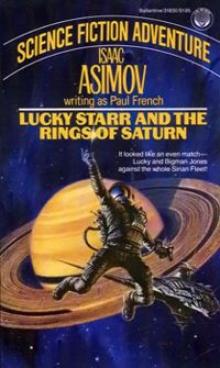 Lucky Starr And The Rings Of Saturn ls-6
Lucky Starr And The Rings Of Saturn ls-6 100 Malicious Little Mysteries
100 Malicious Little Mysteries Forward the Foundation f-2
Forward the Foundation f-2 I.Asimov: A Memoir
I.Asimov: A Memoir Foundation's Edge f-6
Foundation's Edge f-6 Lucky Starr and the Pirates of the Asteroids ls-2
Lucky Starr and the Pirates of the Asteroids ls-2 Robot City 1 & 2
Robot City 1 & 2 The Fourth Science Fiction Megapack
The Fourth Science Fiction Megapack Asimov’s Future History Volume 16
Asimov’s Future History Volume 16 The Dim Rumble
The Dim Rumble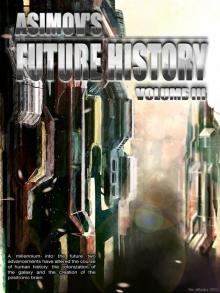 Asimov's Future History Volume 3
Asimov's Future History Volume 3 The Currents Of Space te-3
The Currents Of Space te-3 Asimov’s Guide To Shakespear. Volume 1
Asimov’s Guide To Shakespear. Volume 1 Asimov’s Future History Volume 13
Asimov’s Future History Volume 13 Asimov’s Future History Volume 12
Asimov’s Future History Volume 12 The Secret Sense
The Secret Sense Of Time and Space and Other Things
Of Time and Space and Other Things Norby tnc-2
Norby tnc-2 Norby The Mixed-Up Robot tnc-1
Norby The Mixed-Up Robot tnc-1 Misbegotten Missionary
Misbegotten Missionary Asimov’s Future History Volume 19
Asimov’s Future History Volume 19 Fantastic Voyage II: Destination Brain fv-2
Fantastic Voyage II: Destination Brain fv-2 Asimov’s Future History Volume 10
Asimov’s Future History Volume 10 Asimov's Future History Volume 2
Asimov's Future History Volume 2 Feeling of Power
Feeling of Power In the Beginning
In the Beginning The Caves of Steel trs-1
The Caves of Steel trs-1 Asimov's Future History Vol 2
Asimov's Future History Vol 2 Caliban c-1
Caliban c-1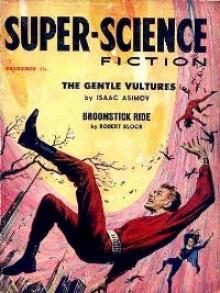 The Gentle Vultures
The Gentle Vultures Utopia c-3
Utopia c-3 Prelude to Foundation f-1
Prelude to Foundation f-1 Short Stories Vol.1
Short Stories Vol.1 Asimov’s Future History Volume 8
Asimov’s Future History Volume 8 Daneel Olivaw 4 - Robots and Empire
Daneel Olivaw 4 - Robots and Empire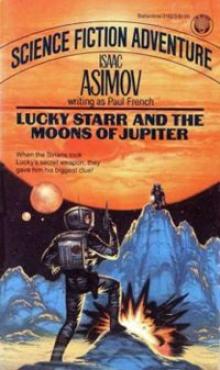 Lucky Starr The And The Moons of Jupiter ls-5
Lucky Starr The And The Moons of Jupiter ls-5 Gold
Gold Asimov’s Future History Volume 4
Asimov’s Future History Volume 4 Foundation and Empire f-4
Foundation and Empire f-4 Potential
Potential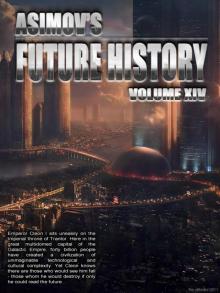 Asimov’s Future History Volume 14
Asimov’s Future History Volume 14 Asimov’s Future History Volume 7
Asimov’s Future History Volume 7 Daneel Olivaw 2 - The Naked Sun
Daneel Olivaw 2 - The Naked Sun Lucky Starr and the Pirates of the Asteroids
Lucky Starr and the Pirates of the Asteroids Foundation f-3
Foundation f-3 All the Troubles of the World
All the Troubles of the World Cleon the Emperor
Cleon the Emperor Asimov's Future History Volume 5
Asimov's Future History Volume 5 Asimov’s Future History Volume 20
Asimov’s Future History Volume 20 Robots and Empire trs-4
Robots and Empire trs-4 Profession
Profession It's Been a Good Life
It's Been a Good Life The Robots of Dawn trs-3
The Robots of Dawn trs-3 Lucky Starr And The Oceanf Of Venus ls-3
Lucky Starr And The Oceanf Of Venus ls-3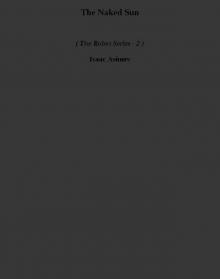 The Naked Sun trs-2
The Naked Sun trs-2 Asimov's Future History Volume 1
Asimov's Future History Volume 1